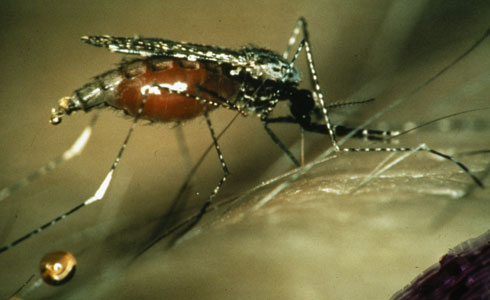Anopheles dirus
Anopheles dirus transmits malaria in forested areas of south east Asia.
It is one of 7 cryptic species that comprise the Anopheles dirus species complex. Because these species play a major role in malaria transmission, it is important to suppress their populations to reduce the threat of disease.
Sympatric species of the complex differ in several ways:
- in the types of aquatic habitat occupied by the immature stages
- in seasonality
- in behaviour
It is ironic that this species needs to be controlled for health reasons whilst its existence is endangered by the disappearance of tropical forest.
This species was recognised as being distinct from Anopheles balabacensis in 1979.
Species detail
-

Taxonomy
Scientific studies have helped distinguish separate species within the Anopheles dirus complex. Find out more.
-

Distribution
This mosquito is found in Asia from Myanmar to Vietnam and China. It thrives in small, usually temporary bodies of ground water. Discover how human activities have helped create new habitats for this disease vector.
Images

A field worker using himself as bait to capture Anopheles dirus females during a malaria survey in Thailand.
© Ralph Harbach
Collecting Anopheles dirus larvae from elephant footprints.
© Ralph Harbach
About the author

Dr Ralph Harbach
Merit Researcher and world authority on the taxonomy and systematics of mosquitoes. Focusing on the integrated systematics of insect disease vectors, especially Culicidae.
A word from the author
"This attractive but notorious malaria-transmitting mosquito will soon have its entire genome sequenced for comparison with the genomes of other malaria vector species to gain a better understanding of vectorial capacity and its eventual manipulation to reduce the burden of disease."
You can refer to the Anopheles genomes white paper on VectorBase for background information.
Glossary
Sympatric
Organisms whose ranges overlap or are even identical, so that they occur together at least in some places.
Toolbox
References
Peyton, E L and Harrison, B A, 1979. Anopheles (Cellia) dirus, a new species of the Leucosphyrus Group from Thailand (Diptera: Culicidae). Mosquito Systematics 11: 40–52
